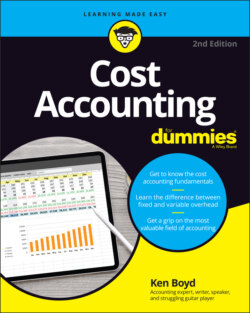Читать книгу Cost Accounting For Dummies - Kenneth W. Boyd - Страница 90
Adjusting target net income for income taxes
ОглавлениеIt’s a smart move to assess the impact of taxes on target net income. Assume your business, Pizza Gone Wild, earns a $100,000 profit. That profit doesn’t account for income taxes. It assumes that as the owner, you keep $100,000 in your pocket with no taxes paid. Assume a 30 percent tax rate. You can calculate the pre-tax dollars needed to earn $100,000 after taxes:
Pre-tax dollars = cost of item ÷ (1 - tax rate)
Pre-tax dollars = $100,000 ÷ (1 - 0.30)
Pre-tax dollars = $100,000 ÷ 0.70)
Pre-tax dollars = $142,857.14
The taxes paid are $42,857.14. And you’re probably saying, “Oh, I get it. To earn $100,000 after tax, I need to increase my sales to cover the taxes.” And you’re right. Ideally, sales prices and volume are sufficient to cover the burden of taxes.
Consider an example, using Pizza Gone Wild. The plan for profitability was to sell 10,000 units at $20 each, but that won’t pay the taxes. Calculate the number of units you need to sell to cover profits and taxes ($142,857.14):
$142,857.14 = (units × $20) – (units × $8) – $20,000
$142,857.14 = units × ($20 – $8) – $20,000
$142,857.14 = units × $12 – $20,000
To finish the calculation, add $20,000 to both sides of the equation. Then divide both sides by $12.
You need to sell 13,571 units to handle the $142,857.14. That’s 10,000 units for your profit and 3,571 units to handle the taxes. You gotta sell a lotta dough to make a little dough.
